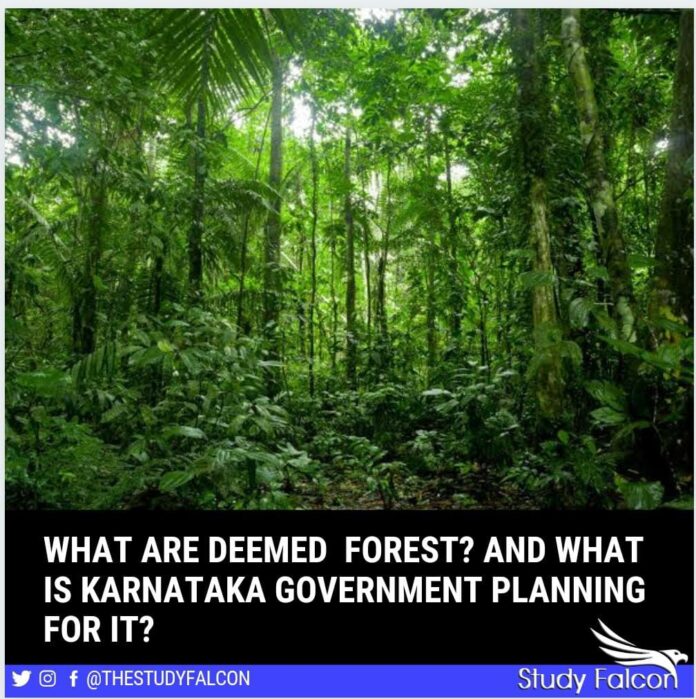Karnataka government has recently announced that it would declassify 6.64 lakh hectares (nearly 67%) of the 9.94 lakh hectares of deemed forests in the state and hand it over to Revenue authorities. It is alleged that large amounts of agriculture and non-forest land are “unscientifically” classified as such.
The issue with the areas under the categories of Deemed forest is that this concept has not been clearly defined in any law including the Forest Conservation Act of 1980. The majority of definition is derived from a case of T N Godavarman Thirumalpad. A wide definition of forests under the Act, “The word ‘forest’ must be understood according to its dictionary meaning. This description covers all statutorily recognised forests, whether designated as reserved, protected or otherwise for the of Section 2 (1) of the Forest Conservation Act,”.
Deemed forests, comprising about 1% of India’s forest land, are a controversial subject as they refer to land tracts that appear to be a “forest”, but have not been notified so by the government or in historical records.The term “Forest land” comprises not only of the Forest but other land areas recorded as forest in the government record irrespective of the ownership.
An expert committee constituted by the state government identified ‘deemed forests’ as,
Land having the characteristic of forests irrespective of the ownership. Thickly wooded areas of the Revenue Department, not handed over to the Forest Department. Thickly wooded areas recommended to be handed over to the Forest Department. Thickly wooded land distributed to grantees but not cultivated. Thickly wooded plantations of the Forest Department.
The expert committee reports in 1997 and 2002 identified 43.18 lakh hectares of forest land for conservation in Karnataka, which included 33.23 lakh hectares notified forest area as per forest records and 9.94 lakh hectares ‘deemed forests’.
In 2014, the government relooked at the categorisation of forests and found that some of the ‘statutory forests’ had been wrongly classified as ‘deemed forest’. It also held that a well-defined scientific, verifiable criterion was not used while applying the dictionary definition which resulted in a subjective classification of areas as deemed forests. The subjective classification, in turn, resulted in conflicts between the Forest Department and other departments like Revenue, Irrigation, Public Works and Energy.
The random classification caused hardship to farmers in some areas and there is also a commercial demand for mining in some regions designated as deemed forests. Revised Coverage, Later, newly formed committees identified 5.18 lakh hectares of deemed forest land that could be released from the total area.
After a recent study of the actual extent of deemed forest areas, the amount of deemed forest land to be released has been revised to 6.64 lakh hectares. In 2019, the state had filed an interim application in the SC for the exclusion of the revised area but the Court did not pass an order on the application.










